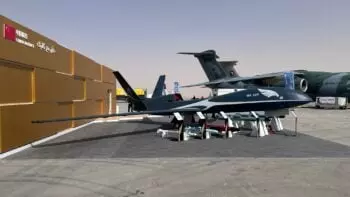The US Army has made a surprising announcement, canceling its Future Attack Reconnaissance Aircraft (FARA) program and making several other significant cuts in its aviation strategy. This decision has thrown the service's long-term plans into doubt and taken a potential multi-billion-dollar contract off the table.
A Shift in Strategy
The cancellation of the FARA program reflects a massive shift in the Army's aviation strategy and disrupts years of planning. Interestingly, this decision comes exactly two decades after the Army ended its plans to procure the RAH-66 Comanche and nearly 16 years after terminating work on the ARH-70A Arapaho—both aircraft designed to replace the Kiowa, the very helicopter that FARA was supposed to replace.
Army leaders attribute this decision to the changing nature of warfare in the modern era. They emphasize that aerial reconnaissance has fundamentally changed, with sensors and weapons mounted on unmanned systems and in space becoming more ubiquitous, reaching further, and becoming more affordable than ever before.
Investing in Unmanned Systems
While observations from conflicts in Ukraine and Gaza played a part in the cancellation of FARA, the need to allocate funds for unmanned systems was a prime factor. The Army plans to free up billions of dollars to invest in developing and purchasing unmanned aerial reconnaissance systems. This shift in focus aims to fulfill the role of the Kiowa helicopter as an armed scout operating ahead of other units in war zones.
Future Investments
The Army has outlined four key areas where it plans to invest the freed-up funds within the aviation portfolio:
- Lockheed-Sikorsky Deal: The Army aims to ink a new multi-year procurement deal with Lockheed-Sikorsky for the UH-60M Blackhawk line.
- Boeing Production: Boeing will receive the green light to formally begin production on the CH-47F Block II Chinook.
- Future Long-Range Assault Aircraft (FLRAA): Development of FLRAA will continue as planned.
- Unmanned Aerial Reconnaissance Systems: Additional investments will be made in developing and buying future tactical unmanned systems and launched effects.
These investments will strengthen the Army's aviation portfolio, place the service on a sustainable strategic path, and further its broader modernization plan.
Fallout and Industry Response
The Army's decision is expected to face scrutiny from Congress, industry stakeholders, and analysts. The Army needs to win over these groups to keep its fiscal 2024 funding intact and move forward with its plans in fiscal 2025. Questions about the fate of certain programs and the impact on the industrial base have already been raised.
Despite the cancellation of FARA, the Army plans to provide industrial support to Bell and Sikorsky, the two firms that were competing for the FARA production contract. A reworked plan aims to continue the UH-60M Black Hawk production through a new multi-year procurement deal with Lockheed-Sikorsky. It also reassures the industry that funds will be allocated towards FLRAA, easing concerns for Bell. Boeing will finally see production on the CH-47F Block II Chinook after years of delays.
Slowed Down, Not Stopped
While the FARA program has been canceled, the Army is not pulling the plug on the T901 Improved Turbine Engine, which was meant to power FARA. The engine, developed by GE Aerospace, promises superior performance and fuel efficiency. Although delivery of the T901 powerplants was delayed, the Army has now received six more and plans for their integration into the Apache and Black Hawk fleets are on track. The transition to production will be carefully managed to ensure success.
The Future of Army Aviation
The Army remains committed to its aviation portfolio and acknowledges the evolving nature of warfare. While manned aviation will still play a role, the focus will increasingly shift towards unmanned capabilities. The requirement for reconnaissance and security remains valid, and the Army aims to achieve the integration of humans and machines effectively.
Although FARA has been canceled, the Army is pushing forward with the development of future tactical unmanned systems and launched effects. Prototypes for these systems are expected to be in users' hands in early fiscal year 2025, with production to follow shortly after.
The Army's decision marks a significant shift in its aviation strategy. By reallocating funds to invest in unmanned systems and focusing on emerging requirements, the Army is positioning itself for success in the evolving landscape of modern warfare.
Recommended:
 General Atomics debuts new XQ-67A Air Force sensing drone
General Atomics debuts new XQ-67A Air Force sensing drone
 China makes presence felt at Saudi Arabian defense show, outpacing US, Russia
China makes presence felt at Saudi Arabian defense show, outpacing US, Russia

















